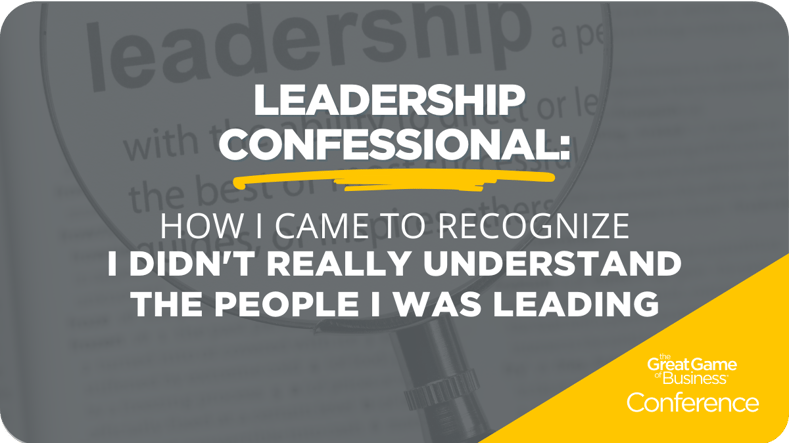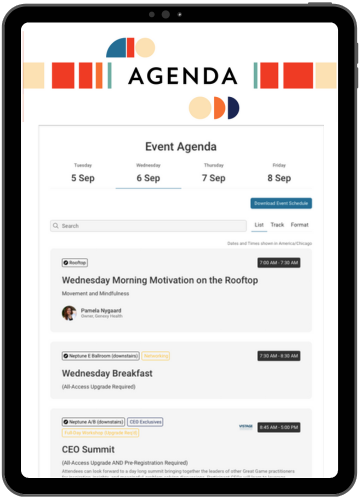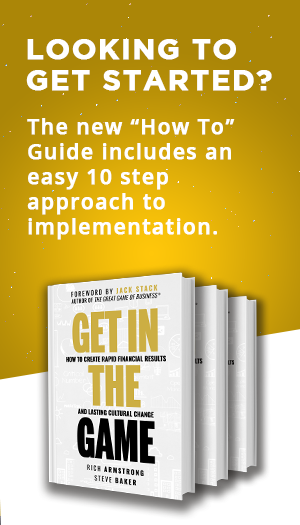
After 26 years in business, I continue to be humbled by how much I still need to learn. For example, an area where I felt I could give myself a strong “A” grade as a leader would have been how I have always cared for my colleagues. When my partners and I decided to sell our company to an ESOP trust, it was largely to benefit our people and protect our unique culture. We had several chances to sell the business to competitors or private equity firms, but we were convinced that these were not the best choices if we wanted to maintain our strong culture and reward those who helped us build the business.
But recent events have given me reason to rethink my personal scorecard. Perhaps I have earned a strong “A” for the level of care I have given from my heart. But what I’ve learned is that my care wasn’t tuned into the real-world challenges that some of my colleagues face each day. Fortunately, I’ve been able to use an eye-opening moment to try and become a better and more caring leader.
An Eye-Opening Experience
On Friday, March 27, 2020, I was driving around Gwinnett County, Georgia delivering what we had termed “Covid relief packages.” Three weeks earlier, we, along with the rest of the world, had gone into shutdown mode and, in a matter of 48 hours, had transitioned to remote work. Our office, which was usually a hub of work, laughter, and activity, had become a silent shell with only “essential” workers present (ironic as our company is named Essential Ingredients).
Heidi, my Executive Assistant, had come up with the idea of the Covid relief kits. They contained fun snacks like a Moon Pie and RC Cola (ask your southern friends if you haven’t heard of these treats before), but also some items in huge demand like toilet paper and hand sanitizer. The plan was for Justin (President and COO) and
I to divide the list of employees who lived locally in half so we could each deliver 25-30 kits. I would ring the doorbell and wait at a distance for my beloved coworker to step outside with a smile and discover the surprise gift on their porch. We would snap a picture from a distance and then off I would go to locate my next team member.
The day went very well as far as deliveries went. But I found myself surprised, even bothered at times at what I discovered. In at least five cases, I found houses in various stages of disrepair—humble, simple homes that reminded me very much of the house I grew up in. I was reared in a rural, lower-middle class home with one- bathroom and three tiny bedrooms for our family of five (three boys). Dad could never be mistaken as a handy man and our house was often in various stages of disrepair as a result of both finances and talent. Being reminded of my humble beginnings made me ashamed of myself for not understanding their lives and struggles the way I wanted to. Mom and Dad had struggled so much with money when I was growing up and my young family had struggled with money early on when we started the business. But that was over 25 years ago—a distant memory for me.
But these folks were struggling now—and they were working for me! Here we were, a “People First” company, 100% employee owned with a benefits package nearly three-times that offered by the market, but folks had some basic needs that weren’t being met TODAY. To be honest, I felt sick to my stomach.
Establishing a Living Wage
After I delivered my final kit, I called Justin. He told me he had just finished his deliveries as well. I asked him how it had gone. Without further prompting, he told me he had seen similar things to what I saw. Most folks seemed to be “doing fine.” But about 20% of the places he visited left him surprised and saddened. Clearly, we needed to do something to help. I asked him to give it some thought over the weekend and we agreed that we would regroup on Monday to discuss our thoughts.
When Monday came, I felt worse. This 100% employee-owned company with a strong culture of care, community, and family included folks who were struggling to meet today’s needs. Between our 401k (and match) and ESOP they would certainly have a very handsome retirement. But those funds couldn’t help them with a car payment, insurance, electric bills, or a kid’s college tuition. We had taken a big step toward fixing the wealth gap in retirement, but that wasn’t enough to meet our colleagues’ immediate needs.
After much discussion with our executive team, board members, and some outside advisors, we came up with our own “Living Wage” program. Based on data for our area, we determined that $50,000 was the minimum amount required for a family to live comfortably. We currently had folks working for us making around $35,000, which was “market rate” for their job description. We had felt like our benefits package, plus our bonus plan (worth up to 20% of annual compensation), would put us above market. And it probably did, but it still did not solve these problems.
Through our discussions, we also came to realize that not all the issues we were seeing would be solved with more money. Financial literacy education was needed to give them the tools and support to make wise decisions. So, we paired the Living Wage Program with a financial education class (basic budgeting, accountability, etc.). We then put them on a fast track to $50,000 a year by issuing more frequent salary and performance reviews with the plan to get everyone in the company up to $50,000 inside of 24 months. We also made some upward adjustments to those folks who already made a living wage to ensure that they did not feel forgotten.
The program was rolled out 12 months ago and it has been well received. Our team expressed a great deal of gratitude for the creative thinking and how the company took action. One family was able to qualify for a home loan based on the new salary and purchase their first home. And year to date, our team has been able to pay off over $250,000 in debt through the financial education program. However, we now find ourselves in an extremely inflationary environment, which has forced us to re-evaluate what a new “living wage” is for today’s environment.
A Call to Action
Many of us as business leaders invest a lot of time in peer groups, reading, studying our unique markets, and our balance sheets in order to run a great business. My encouragement to you as “people first” leaders is to spend time with your people on their turf and terms. Be humble and open about what you don’t know—and what you can learn. If you can do that, I can almost guarantee that you will discover unique ways to improve the lives of people in your care as well as the health and performance of your business as we certainly realized. Isn’t that what servant leadership is all about in the first place?
Don't Miss Kris Maynard's Session, "Counterintuitive Care: Putting People First, Even (and Especially) When It’s Hard," at the 2023 Great Game of Business Conference!

Other items you might like:
.png)


-1.png?width=80&height=70&name=Chat%20Bubble%202%20(1)-1.png)





.png)




-5.png)

